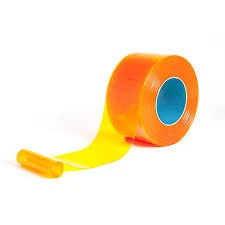- Afrikaans
- Albanian
- Amharic
- Arabic
- Armenian
- Azerbaijani
- Basque
- Belarusian
- Bengali
- Bosnian
- Bulgarian
- Catalan
- Cebuano
- Corsican
- Croatian
- Czech
- Danish
- Dutch
- English
- Esperanto
- Estonian
- Finnish
- French
- Frisian
- Galician
- Georgian
- German
- Greek
- Gujarati
- Haitian Creole
- hausa
- hawaiian
- Hebrew
- Hindi
- Miao
- Hungarian
- Icelandic
- igbo
- Indonesian
- irish
- Italian
- Japanese
- Javanese
- Kannada
- kazakh
- Khmer
- Rwandese
- Korean
- Kurdish
- Kyrgyz
- Lao
- Latin
- Latvian
- Lithuanian
- Luxembourgish
- Macedonian
- Malgashi
- Malay
- Malayalam
- Maltese
- Maori
- Marathi
- Mongolian
- Myanmar
- Nepali
- Norwegian
- Norwegian
- Occitan
- Pashto
- Persian
- Polish
- Portuguese
- Punjabi
- Romanian
- Russian
- Samoan
- Scottish Gaelic
- Serbian
- Sesotho
- Shona
- Sindhi
- Sinhala
- Slovak
- Slovenian
- Somali
- Spanish
- Sundanese
- Swahili
- Swedish
- Tagalog
- Tajik
- Tamil
- Tatar
- Telugu
- Thai
- Turkish
- Turkmen
- Ukrainian
- Urdu
- Uighur
- Uzbek
- Vietnamese
- Welsh
- Bantu
- Yiddish
- Yoruba
- Zulu
Clear PVC Plastic Material for Versatile Applications and Durable Solutions
The Versatility of Transparent PVC A Closer Look at Plastic's Essential Role
Plastic materials have become an integral part of our daily lives, with one of the most versatile types being transparent polyvinyl chloride (PVC). This synthetic plastic polymer is well-known for its unique combination of flexibility, durability, and transparency, making it suitable for a wide array of applications across various industries. In this article, we will explore the properties, uses, and benefits of transparent PVC, highlighting its role in modern manufacturing and design.
Understanding PVC
Polyvinyl chloride, commonly known as PVC, is one of the most widely used synthetic polymers in the world. It can be produced in two different forms rigid and flexible. Transparent PVC is a flexible version that retains clarity, allowing for a clear view of the contents it encloses. This specific type is created by adding plasticizers, which enhance its flexibility and workability.
One of the remarkable characteristics of transparent PVC is its exceptional resistance to atmospheric conditions, chemicals, and UV radiation. This makes it an ideal choice for outdoor applications as well. Moreover, transparent PVC is lightweight yet robust, making it easy to handle while providing substantial protection.
Applications of Transparent PVC
Transparent PVC has found its niche in numerous applications, making it a critical material in several industries
1. Packaging Industry Transparent PVC is widely used in the production of packaging products like blister packs, clamshells, and food wrapping films. Its clarity allows consumers to view the product without opening the packaging, enhancing the shopping experience.
plastic transparent pvc

2. Construction In the construction sector, transparent PVC is used for windows, doors, and roofing materials. Its durability and ability to withstand weather changes make it a preferred choice for both residential and commercial buildings.
3. Electronics and Appliances Transparent PVC is often used in the production of electrical insulation, connectors, and flexible housings for various electronic devices. Its insulating properties and resistance to moisture enhance the safety and functionality of electronic products.
4. Signage and Display Due to its clarity and ease of printing, transparent PVC is ideal for signage and display applications. This material can be easily customized with graphics and text, making it a popular choice for advertising and promotional items.
5. Medical Applications The medical industry also benefits from transparent PVC in the production of items like IV bags, tubing, and surgical drapes. Its safety, sterilization capabilities, and transparency are crucial for these applications.
Environmental Considerations
While transparent PVC offers numerous advantages, it is also important to consider its environmental impact. Traditional PVC production can involve harmful chemicals and processes. However, advancements in technology are leading to more sustainable manufacturing practices. Recyclability is also an essential attribute of PVC. When transparent PVC products reach the end of their life cycle, they can be recycled and reused to create new products, thus reducing waste and promoting sustainability.
Conclusion
Transparent PVC exemplifies the multifaceted nature of modern plastics. From packaging to construction, its clear, durable, and flexible nature serves a wide range of applications, enhancing functionality and aesthetics alike. As industries continue to innovate, transparent PVC is expected to maintain its pivotal role in the manufacturing landscape. However, as we move forward, it is crucial to prioritize sustainable practices and recycling to minimize the environmental impact while reaping the benefits of this versatile material. The future of transparent PVC lies not only in its utility but also in its responsibility to the planet, which will determine its place in tomorrow's world.
-
Transparent PVC-Folie – Flexible & Durable Clear Plastic Sheets for Versatile UseNewsJul.05,2025
-
High-Quality Cold Room Door Curtains Durable PVC Strip Curtains for Cold StorageNewsJul.05,2025
-
Shop Yellow Ticking Stripe Curtains – Classic Style, Durable Fabric, Multiple Colors AvailableNewsJul.05,2025
-
Plastic Curtain for AC – Energy Saving & Easy Installation Perfect for Room and Freezer UseNewsJul.04,2025
-
Industrial Strip Curtains - Durable PVC & Plastic Solutions for Industrial DoorsNewsJun.24,2025
-
PVC Curtain Strip – Durable Standard PVC Strips for DoorsNewsJun.10,2025



